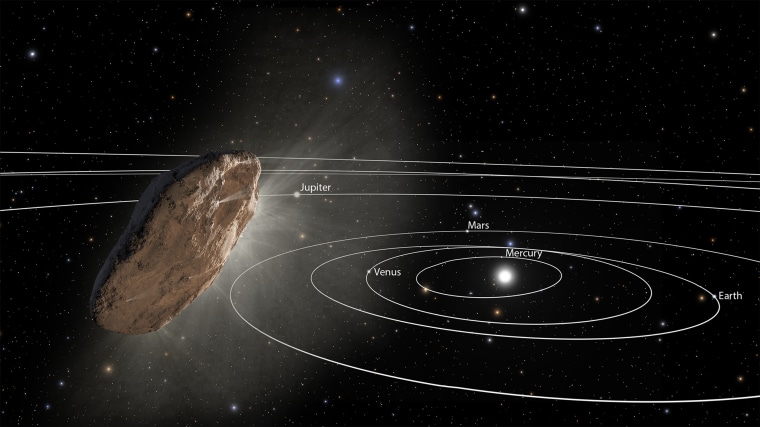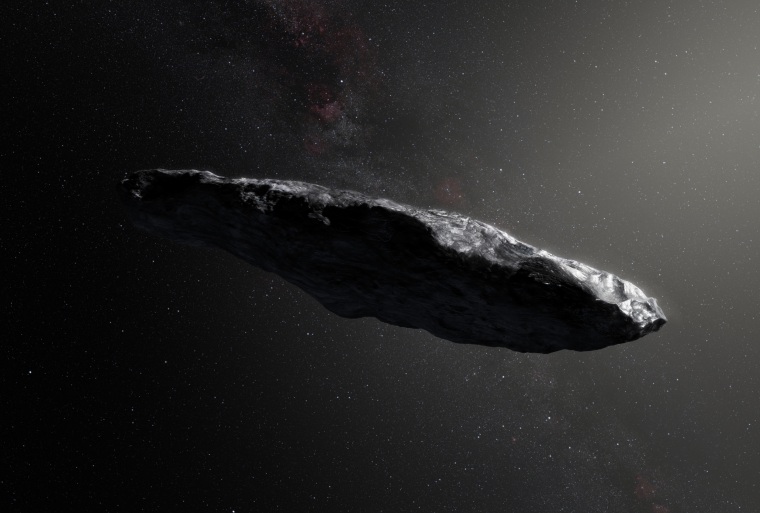When astronomers first spied a weird cigar-shaped object speeding past the sun last October, they could tell from its path that it had come from another star system — but they didn't know exactly what it was.
Now they know. A study published Wednesday in the journal Nature indicates that the interstellar visitor, dubbed Oumuamua, is neither an asteroid nor an alien spacecraft (as some wags had suggested) but a small interstellar comet.
"It's the only such object discovered so far," Marco Micheli, an astronomer with the European Space Agency and the lead author of the new study, told NBC News MACH in an email.

Comets — icy, dusty objects that have been likened to "dirty snowballs" — typically form long tails when they come close to the sun. No such tail was visible in earlier observations of Oumuamua (which means "scout" in Hawaiian), a fact that helped lead other astronomers to conclude that it was an asteroid.
But an analysis of new observations made by ground-based telescopes and the Hubble Space Telescope yielded a surprise: Oumuamua's trajectory couldn't be explained solely by the gravitational forces exerted on it by the sun and the planets — as would be the case if it were an asteroid, or space rock.
"Unexpectedly, we found that Oumuamua was not slowing down as fast as it should have under gravitational forces alone," Micheli said in a statement.
His team concluded that the unexpected motion of Oumuamua had to be caused by the spewing out of small quantities of gaseous materials from its surface. This "outgassing" — commonly seen in comets — was too small to be visible but significant enough to affect Oumuamua's trajectory.
But not everyone is buying that explanation — at least not completely.
Alan Jackson, an astronomer at the University of Toronto Scarborough, told MACH in an email that if Oumuamua is a comet, it must be one that lost much of its ice before leaving its home star system.
"A comet that has lost enough of its ice is essentially the same as an asteroid," he said. "Oumuamua thus seems to be in that ambiguous region between the two."
Jackson conducted previous research on Oumuamua but was not involved in the new study.
Whatever its precise identity, Oumuamua might be just the first of many such interstellar visitors we'll encounter. Jackson said new telescopes should help astronomers find "a lot more objects like Oumuamua and we will then be able to put together a more complete picture of what the building blocks of planets look like in other planetary systems, which will also help us to understand how planets form."
Oumaumau is now headed to the outer solar system at a speed of about 70,000 miles per hour. Astronomers expect it to pass Neptune's orbit in four years.
"The object is now too faint to observe, so no new data will be acquired," Micheli said in the email. "But I expect scientists will keep working on their data for quite some time."

